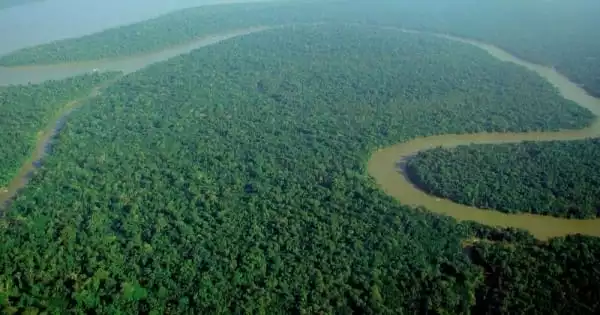In the Amazon region, the world’s largest river basin and a hotspot for future hydropower development, hydropower is the dominant source of energy. A new Global Environmental Change study, however, warns that climate change-driven reductions in precipitation and river discharge will reduce the Amazon’s hydropower capacity in the coming decades.
The authors of the study looked at 351 proposed hydropower projects in the Amazon basin. Their findings suggest that by mid-century, hydrologic shifts will reduce hydropower generation in many locations. Alternative energy sources such as solar and wind are expected to become increasingly important as river discharge becomes more variable and hydropower output declines.
According to co-author Stephen Hamilton, an ecosystem ecologist at Cary Institute of Ecosystem Studies, “The flow regimes for hydropower projects in the Amazon basin are based on historic river levels. Because climate change is disrupting these patterns, many existing and proposed projects are unlikely to be as effective in the future.”
The team modeled continental-scale changes in precipitation and river discharge using several IPCC climate change scenarios to see where and how hydropower production is likely to shift. They also estimated changes in energy costs in the Amazon region, comparing the costs of hydropower to solar and wind energy.
In the coming decades, climate change-driven reductions in precipitation and river discharge will diminish the Amazon’s hydropower capacity.
Stephen Hamilton
Continent-scale changes in precipitation and runoff, which influence river discharge, were estimated using general circulation models that project future precipitation trends based on climate data. Air temperature, humidity, wind speed, solar radiation, pressure, and precipitation are all inputs. Power output at proposed dam sites was estimated using maximum and minimum river flows at each site under current and future climate conditions.
The LCOE (Levelized Cost of energy) – the per-unit price of energy required for an energy production project to break even – was used to assess how climate change would affect energy costs and project feasibility. The LCOE considers the costs of constructing, operating, and maintaining proposed energy plants. The researchers made projections based on current, intermediate, and worst-case climate change scenarios. They also compared hydropower project costs to the costs of implementing wind or solar power projects.
They discovered that by mid-century, river flows at proposed dam sites across the Amazon basin are expected to fall by 13-20% on average, with significant regional variability. In the east (the Brazilian Amazon), declines range from 18 to 23%. Flows could increase by 1.5-2.5 percent in the west (Andean Amazon countries), where rainfall is expected to increase. The energy output is expected to change in response to changes in river discharge. Because of the increasing variability of flows in the Brazilian Amazon tributaries, this region is likely to be the most severely affected.

Rafael Almeida, the study’s lead author and a postdoctoral researcher at Cornell University who was previously a visiting graduate student at Cary, explains, “Run-of-river hydropower dams are designed to operate within a specific flow range. Flows that are too low will not generate power, and flows that are too high will cause problems while not generating extra power. As precipitation in the Brazilian Amazon becomes more variable, with higher ‘highs,’ lower ‘lows,’ and fewer periods of optimal flow, proposed hydropower plants will operate at full capacity less frequently.”
Energy costs are expected to rise sharply in areas where hydropower energy production is expected to decline. The Levelized Cost of energy for proposed dams in Brazil could increase by 52-105 percent.
According to Almeida, “We expected climate change to reduce Amazon hydropower’s competitiveness, but the projected magnitude is mind-boggling. Looking at dams proposed for Brazil, the cost of selling electricity to fully recover capital investments could more than double for a quarter of the sites.”
“Hydropower plants take a long time to plan and build,” Hamilton says. Many of the proposed projects, if built, would be operational by the mid-century mark. Due to climate change, many of these dams will not be as reliable or cost-effective as expected by the time they are built. Meanwhile, solar and wind power are expected to become more economically competitive, providing greater security while incurring lower environmental costs than hydropower. Dams obstruct fish migration, flood upstream environments, and alter downstream river flow patterns, all of which have serious ecological and social consequences.
Hydropower must be designed to work in tandem with alternative energy sources such as solar and wind, so that periods of low river flow do not disrupt electrical grids that power cities and industries. New hydropower facilities should be carefully sited in areas with more reliable flows and designed to operate over a wider range of flows than historical experience suggests.”
Finally, Almeida says, “Climate resilience must be a priority for energy planners. Brazil, for example, has a population of over 200 million people, and hydropower is the primary energy source. Due to extreme drought, Brazilian hydropower reservoirs are at record lows this year; as a result, Brazil may need to begin power rationing. To ensure energy security in the future, energy sources must be diversified to include solar and wind and hydropower plans must be adjusted to accommodate future not historic river flows.”
















